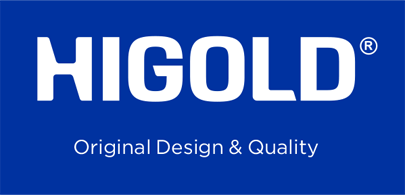Stainless steel kitchen sinks are among the most popular kitchen appliances due to their durability, ease of cleaning, and simple, attractive appearance. However, even stainless steel is not entirely without problems.
Many people find that small rust spots sometimes appear on the surface of their stainless steel kitchen sinks over time. This often raises the question: Isn't stainless steel supposed to be rust-free? Why are rust spots appearing on the sink? And the most crucial question is, how do you remove rust from stainless steel kitchen sinks?
This article will focus on the core issue of "stainless steel kitchen sinks," systematically and professionally answering this question from the perspectives of the causes of rust formation, cleaning and removal methods, and daily maintenance techniques.
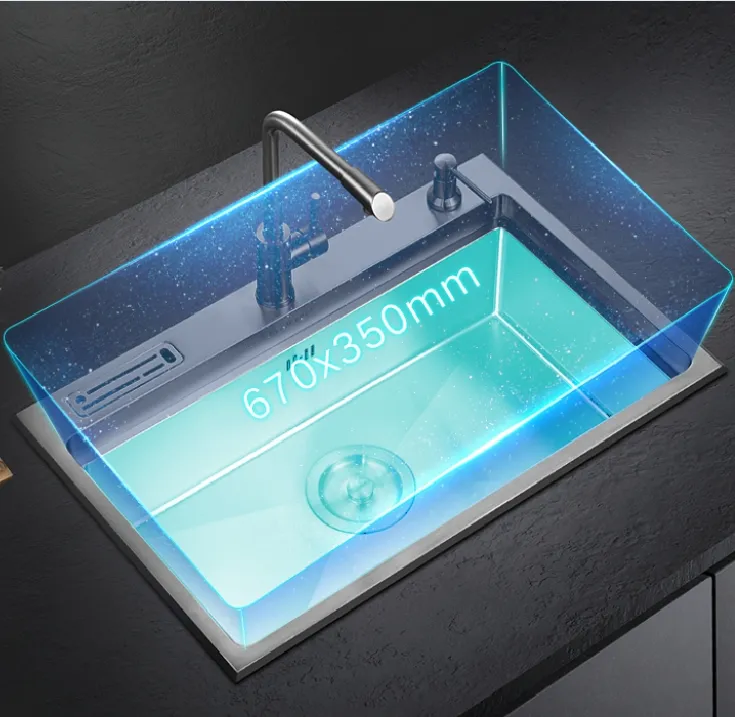
Why Do Stainless Steel Kitchen Sinks Rust?
First, it's essential to clarify a common misconception: stainless steel is not completely rust-free. It's called "rust-free" because its surface contains chromium, which combines with oxygen in the air to form a dense passivation film, thus preventing the internal metal from oxidizing.
However, in the kitchen environment, where stainless steel kitchen sinks are constantly exposed to moisture, grease, detergents, seasonings, and even salt, they can still corrode to varying degrees, leading to rust.
Common causes of rust formation include:
• Rust deposits in water: Iron impurities from tap water pipes accumulate on the sink surface, eventually leaving rust spots.
• Food residue or seasoning corrosion: Seasonings containing salt, acid, or alkali, such as soy sauce, salt, and vinegar, can damage the protective film on the stainless steel surface if left on the sink for extended periods.
• Metal friction particles: Placing iron utensils or using steel wool in the stainless steel kitchen sink for extended periods can leave iron ions, which can also cause rust spots.
• Inadequate cleaning: Water stains, grease, and detergent residue, if not rinsed off promptly, can accelerate oxidation in localized areas.
Therefore, rust formation is not necessarily due to poor material quality, but rather improper use and maintenance.
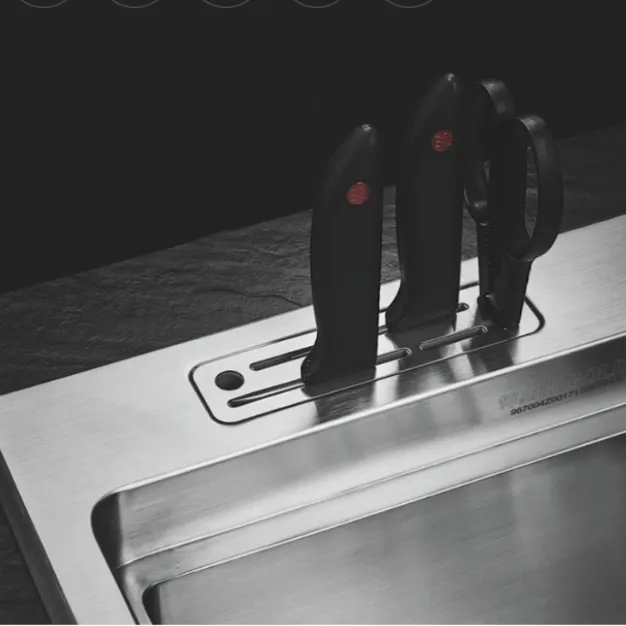
How to remove rust from a stainless steel kitchen sink?
There are several methods to remove rust stains from stainless steel kitchen sinks. These methods each have their advantages and disadvantages in terms of safety, ease of use, and cleaning effectiveness. The following is a detailed explanation from a professional perspective:
1. Removing Rust with Baking Soda Paste
Baking soda is a common and safe alkaline cleaner that has a neutralizing effect on rust.
Instructions:
• Mix baking soda with a small amount of water to form a paste.
• Apply evenly to the rusted areas of the stainless steel kitchen sink.
• Let it sit for 10-15 minutes, then gently wipe with a soft sponge.
• Rinse thoroughly and dry.
Suitable for: Light rust stains, suitable for daily cleaning.
2. Cleaning with White Vinegar
White vinegar is a weak acid that can decompose oxides and remove rust.
Instructions:
• Soak a clean cloth or paper towel in white vinegar and cover the rust stains.
• Let it sit for 15-20 minutes to allow the white vinegar to fully react with the rust.
• Scrub with a soft brush or sponge.
• Rinse thoroughly and dry immediately.
Advantages: Simple and easy to use, harmless to humans.
Precautions: Must be rinsed thoroughly after use, otherwise acid residue may corrode the sink surface.
3. Lemon and Salt Combination
Lemons contain natural citric acid, which, combined with the abrasive action of salt, can effectively remove minor rust stains.
Instructions:
• Cut a lemon in half and dip the surface in fine salt.
• Rub back and forth on the rust stains in the stainless steel kitchen sink.
• Let it sit for a few minutes, then rinse with water and dry with a clean cloth.
Features: Natural, environmentally friendly, suitable for small, spot-like rust stains.
4. Professional Stainless Steel Cleaner
There are specialized stainless steel cleaners and polishers available on the market that can quickly dissolve rust spots.
Instructions:
• Apply a small amount of cleaner to the rust stains according to the instructions.
• Gently rub with a soft cloth or sponge until the rust is removed.
• Rinse thoroughly with clean water and dry.
Advantages: Fast and thorough results.
Precautions: Choose reputable brands and avoid inferior products containing strong acids or alkalis.
5. Toothpaste Polishing Method
Toothpaste contains fine abrasive particles that can gently remove small rust spots on stainless steel kitchen sinks.
Instructions:
• Squeeze a small amount of toothpaste onto a soft cloth.
• Rub repeatedly on the rust spots.
• Rinse thoroughly and dry.
Suitable for: Very minor rust spots.
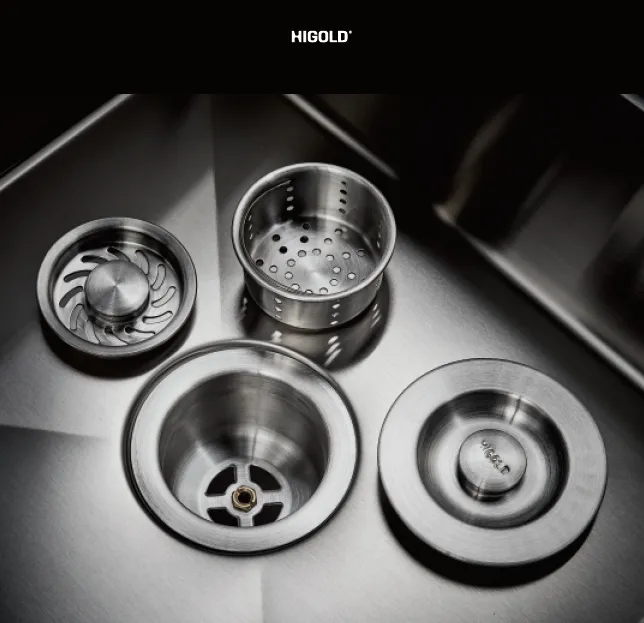
Stainless Steel Kitchen Sinks: Precautions for Rust Removal
When removing rust from stainless steel kitchen sinks, the following points must be noted:
1. Avoid using steel wool: Although steel wool can quickly remove rust, it will scratch the sink surface, damage the protective layer, and make the sink more prone to rusting again.
2. Avoid using strong acids or alkalis: Strong corrosive liquids such as hydrochloric acid and bleach will cause irreversible damage to stainless steel.
3. Rinse thoroughly after cleaning: Regardless of whether you use baking soda, white vinegar, or a professional cleaner, you must rinse thoroughly and dry completely afterward.
4. Gentle wiping is key: Choose a soft cloth or sponge to avoid increasing wear and tear on the sink surface.
How to prevent stainless steel kitchen sinks from rusting again?
Rust removal is only the first step; prevention is more crucial. Here are some professional prevention tips:
1. Keep dry: Wipe with a dry cloth after each use to avoid prolonged water accumulation.
2. Clean promptly: Rinse food scraps and seasonings promptly to prevent them from adhering for extended periods.
3. Avoid prolonged contact with iron products: Do not leave iron pots, pans, or spoons in the stainless steel kitchen sink for extended periods.
4. Polish regularly: Use a stainless steel polishing cloth or polishing compound to restore shine and enhance rust resistance.
5. Use cleaning agents correctly: We recommend using mild, neutral cleaners and avoid products that are too acidic or alkaline.
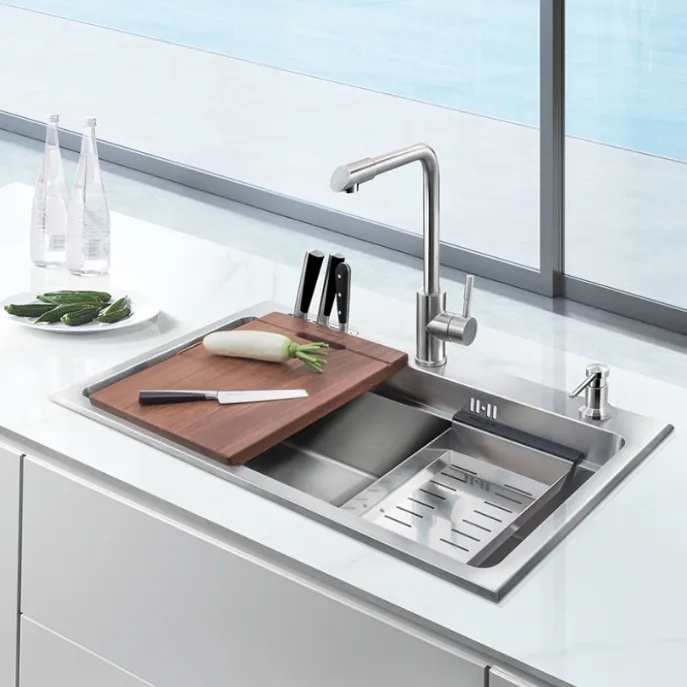
How to remove rust from stainless steel kitchen sinks?
The key lies in a scientific and gentle approach: For rust stains, choose vinegar, baking soda, lemon juice, or a specialized rust remover, and gently wipe with a soft cloth, following the grain of the sink. After rust removal, keep the sink dry, avoid strong acid and alkaline cleaners and hard tools, and perform light polishing regularly.
With proper rust removal and maintenance, stainless steel kitchen sinks can not only regain their shine but also extend their lifespan, keeping your kitchen clean and beautiful.
What makes Higold’s factory different from other suppliers?
Unlike many small-scale factories, Higold operates Asia’s largest smart manufacturing cluster for home hardware, covering 600,000 square meters. Our facility integrates robotic arm welding, automated bending, and PVD technology to achieve premium craftsmanship at competitive prices.
This scale allows us to supply wholesale buyers worldwide while offering ODM customization. Retailers and distributors can request quotes, enjoy promotions, and purchase high-quality sinks directly from our factory in China.
